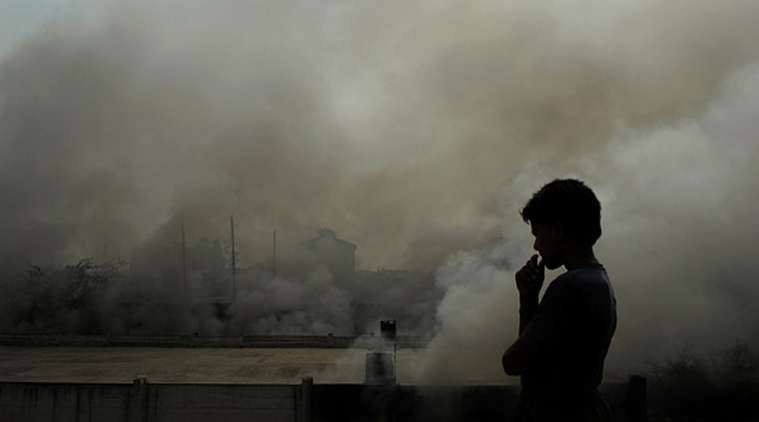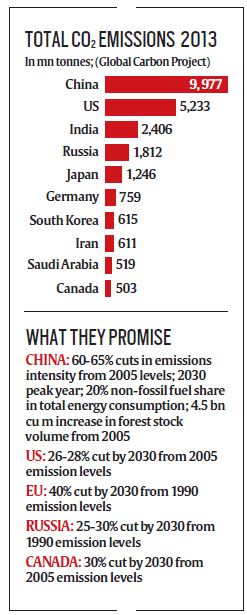Stay updated with the latest - Click here to follow us on Instagram
In targets by big emitters, no hint of support to developing countries
India says countries could do much more if enabled by financial, technical help
 India recently unveiled a composite air pollution index to monitor air quality in some of its cities.
India recently unveiled a composite air pollution index to monitor air quality in some of its cities.
While China’s climate action plan, revealed on Tuesday night, has been widely welcomed, India has been noting with concern that none of the action plans submitted till now, mainly from the developed world, has talked about financial or technological support to be made available to developing countries to help them deal with adverse effects of climate change.
 Every country has to submit its climate action plan called INDC, or Intended Nationally Determined Contributions, ahead of the annual year-end climate change conference, this time being held in Paris.
Every country has to submit its climate action plan called INDC, or Intended Nationally Determined Contributions, ahead of the annual year-end climate change conference, this time being held in Paris.
Following China’s submission, the three biggest greenhouse gas emitters, together accounting for almost 50 per cent of global emissions, have now revealed what they plan to do post-2020.
India, the fourth biggest emitter after China, the US and the EU, and with a share about seven per cent of global emissions, is still finalising its action plan. India had said it would submit a comprehensive INDC that would include not just mitigation actions, or the steps that would lead to a reduction in its emissions, but also the actions it is taking to adapt to the impacts of climate change.
There is a general agreement that developed countries, also the main pollutants and energy guzzlers, would provide finance and technology assistance to poorer and developing countries to help them cope with climate impacts. India, and several other countries, wanted the developed nations to list their finance and technology offerings in their INDCs themselves. With none of those INDCs mentioning these two elements, it has forced a rethink in the Indian establishment whether to stick to a comprehensive plan of action or submit a skeletal, mitigation-centric INDC.
[related-post]
“What we list in our INDC is not going to be dependent on what others have done or will do. We will do what is in our nation’s best interests. But it would have been worthwhile to see finance and technology commitments from the developed countries,” said a senior government official involved in the international negotiations.
India has, however, been maintaining that it would put its best foot forward while offering its INDC. “We will offer a robust and ambitious INDC that will be consistent with our development goals. We are in the final stages of preparing that,” said Environment Minister Prakash Javadekar
But Ravi Shankar Prasad, a key Indian negotiator, also echoed India’s concerns in New York, shortly after China made its INDC public. “We strongly believe that developing countries can do much more if they are enabled in their efforts by provision of finance, technology development and transfer, and capacity building support from the developed countries. Such an international compact of cooperation would help us tread a path that is urgently required to address climate change and its adverse effects,” Prasad, joint secretary in-charge of climate change in the Environment Ministry, was quoted by PTI as saying on Wednesday.
The calculations are still to be done, but nobody is in doubt that the action plans revealed thus far are inadequate to limit the rise in average global temperatures within 2°C from pre-industrial times. Science says the 2° target is essential to save the planet from irreversible impacts of climate change.
While India’s INDC is still under preparation, some likely elements are quite well known. India has announced an ambitious renewable energy plan for 2020 that consists of 100 GW power from solar sources, 60 GW from wind, and 15 GW from biomass.
The doubling of cess on coal production, from Rs 100 per tonne to Rs 200 last year, to create a clean energy fund is another step India has been talking about. The recent cabinet clearance to a law to manage huge funds collected for compensatory afforestation is also likely to make it to India’s INDC.







